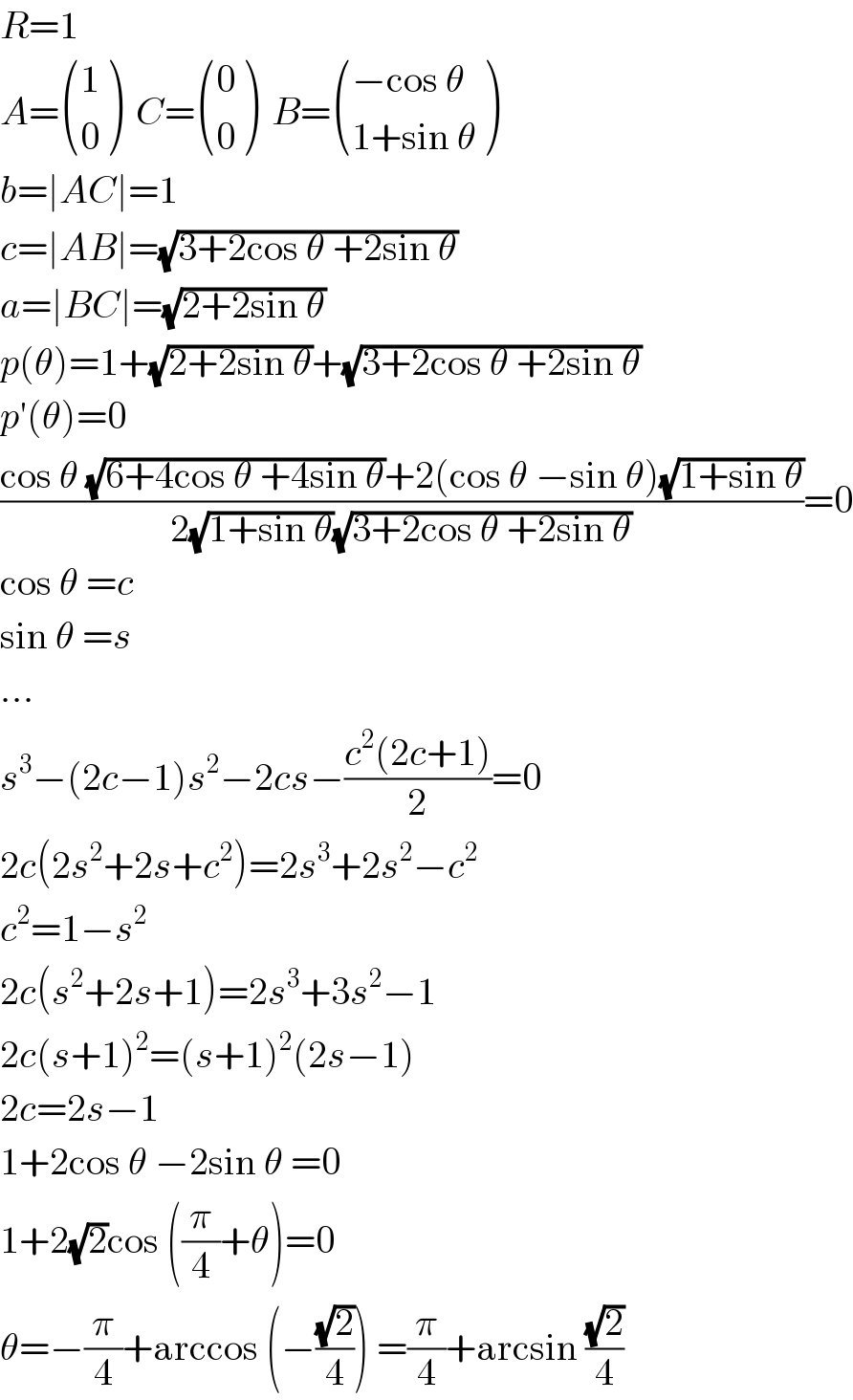
Question and Answers Forum
Question Number 52190 by ajfour last updated on 04/Jan/19

Commented by ajfour last updated on 04/Jan/19

Commented by MJS last updated on 04/Jan/19

Commented by ajfour last updated on 04/Jan/19

Answered by mr W last updated on 04/Jan/19

Commented by mr W last updated on 04/Jan/19

Answered by MJS last updated on 04/Jan/19

Commented by ajfour last updated on 04/Jan/19

